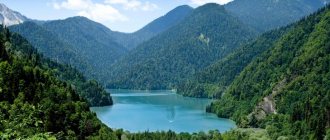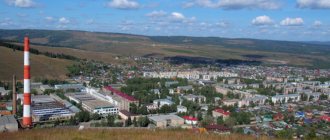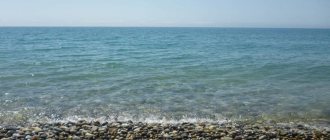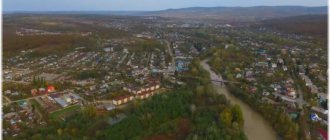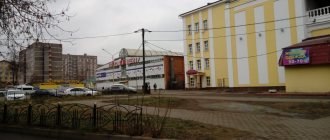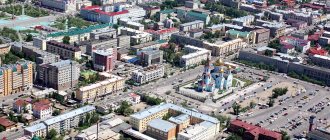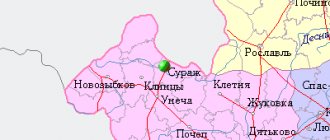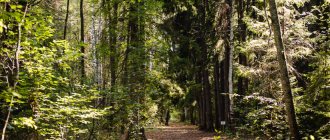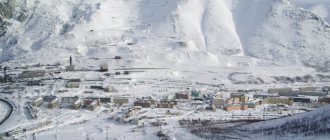December 7, 2021
We've thought of everything: the perfect couple of days in Almaty
Read November 26, 2021
I'm in Almaty, and you?
Read November 18, 2021
More please: how to save money when traveling
Read November 16, 2021
Russia resumes flights with five countries it almost never flew to before
Read November 11, 2021
The authorities want to introduce QR codes for traveling around Russia. How will it work?
Read November 8, 2021
How to have fun in Goa
Read
Abkhazia is a place that is underestimated by many tourists, which is fundamentally wrong. Often people come here as part of tours, although it is better to travel as savages. Let's tell you why.
The situation with coronavirus in Abkhazia
The border with Abkhazia was opened on August 1, 2021.
According to the press service of the Sochi customs, in the first two days of the opening of the border, more than 30 thousand people crossed it in both directions. A video also appeared on the Internet in which hundreds of people stood in queues at the automobile checkpoint in Psou in the middle of the night.
The media write that at the border, travelers are not required to have a certificate of absence of coronavirus infection, and wearing masks in public places is recommended.
We've warned you.
Gegsky (Circassian) waterfall
Coordinates: 43.436291, 40.442211
The largest waterfall in Abkhazia is located at an altitude of 530 meters above sea level on the Gagra ridge, 5 kilometers from the road leading to Ritsa. Its height reaches 70 meters.
Next to the waterfall there is a cave washed out by a stormy water flow. Its area reaches 2000 square meters, and inside there are several corridors and grottoes. Water flows from the ceiling of the cave in thin streams.
Scenes of some famous Soviet films were filmed at the Geg Falls, for example:
- "The Adventures of Sherlock Holmes and Doctor Watson", Deathmatch, 1980
- "Rikki-Tikki-Tavi"
- "Sportloto-82"
It is worth noting that the road to the waterfall is open only from May to November. And then exclusively for SUVs. If you arrive by car, it is better to leave it on the highway and walk to the waterfall.
How to get to the border and cross it?
Attention!
On the edge of the queue!
If you arrive at Sochi airport (Adler) or arrive at the railway station, call a taxi from there to the border. This is the most convenient and fastest way to get to it. The drive from the airport is only 12 km, and there is public transport from central Sochi, where the railway station is located. True, rarely and very slowly.
The border feels somehow conditional, but still there is one, and even two: on the side of Russia and Abkhazia. To check your documents, you only need a Russian or foreign passport. Everyone crosses the border only on foot, except for car drivers. Crossing the border can take from 10 minutes to several hours. It depends on the season and time of day. Border guards on the Russian side check documents and sometimes things more carefully.
Holy places
Abkhazia is famous for its holy places, of which there are many.
Ilor Church of St. George
The Church of St. George is located in the village of Ilor. You need to get there like this: drive along the Sukhumi highway to the city of Ochamchir, then by public transport to the village. Saint George remains the patron saint of the famous temple. A large number of believers from all over the world come here. This is such a sacred place that people believe that their thoughts will materialize. In the temple there are myrrh-streaming icons and particles of the relics of saints.
Ilor Church of St. George
Mokva Cathedral
In the village of Mokva there is the Mokva Cathedral. The cathedral is decorated with frescoes and paintings. It was built in the 10th century, and already in the 12th century it was devastated. In the 19th century they tried to restore it, but it was closed several times. And since 2002, services have resumed there.
Mokva Cathedral
Rock Monastery
Abkhazia is worth visiting and seeing a real masterpiece of human creation - a rock monastery. It was created right on the slope. The nobility hid here in the 12th century.
Rock Monastery
Transport in Abkhazia
The main method of transportation on the territory of Abkhazia is cars. Caring Abkhazians can take you between cities; most importantly, negotiate the price in advance. Drivers drive fast, recklessly and in general in any condition, which is sometimes very frightening. For them, wearing a seatbelt is tantamount to disrespect, but you get used to it after a day. The other side of the coin is that they are always ready to talk about all the interesting places, customs or even about their lives. Drivers and traffic police officers constantly wave to each other on the highway - it’s cute.
They can take you anywhere, even to the next street, even to the other end of the country. There are also minibuses running between the cities (almost all of them are along the coast), hop on them, meet the locals, learn about the cultural characteristics of the country, and don’t forget to look out the windows.
Prices and travel times:
- Minibus from/to the border to/from Gagra: 150 rubles (the journey takes about 40 minutes).
- Minibus from/to the border to/from New Athos: 200 rubles (the journey takes about 2 hours).
- Minibus from/to the border to/from Sukhum: 250 rubles (the journey takes about 2.5 hours).
Minibuses operate until 18:00–19:30, and in the summer season until approximately 21:00. Taking a taxi, of course, is faster and much more comfortable, but more expensive. It all depends on how you agree.
- Taxi from/to the border to/from Gagra: 500–800 rubles.
- Taxi from/to the border to/from New Athos: 1000–1500 rubles.
- Taxi from/to the border to/from Sukhum: 1500–2000 rubles.
Sights of Gagra
Gagra is the most popular resort in Abkhazia. Many of the country's famous attractions are located in and around the city or can be easily reached.
The tourist list of attractions in Gagra includes Ritsinsky National Park and Auadhara (located outside the city); panoramic Mount Mamdzyshkha, from which you can see the whole of Gagra and even Pitsunda; waterfalls and architectural monuments.
Within the city there is a central Primorsky Park, stretching 6 km along the coast. It delights tourists arriving in the city with its greenery, sculptures, ponds and a famous architectural monument - opposite the fountain is the building of the legendary Gagripsh restaurant, where famous Russian and Soviet writers once dined, and Fyodor Chaliapin himself performed. From the southeast, the park is bordered by the famous Gagra Colonnade - another calling card of the city and a recognizable symbol of Abkhazia.
Architectural landmarks can be found in the Old Town. Not far from the central park, on the slope of a picturesque mountain, stands the castle of the Prince of Oldenburg. Almost opposite the castle is the early medieval fortress of Abaata with a functioning Christian church.
Regions of Abkhazia and what to see there
In total, Abkhazia has 7 districts and 8 cities, 4 urban-type settlements and 512 villages. Typically, tourists do not travel inland without going far from the border. But all of Abkhazia is filled with amazing places.
Gagra district
Blue Lake
On the way to Ritsa, you should definitely stop at the miracle lake. First of all, it is really very blue. Secondly, it does not freeze in winter and does not heat up in summer. Thirdly, the photos turn out amazing, especially when there are no tourists. There is a stone there where you can sit and feel like a magical mermaid.
Suspension bridge over the Bzyb River
There will be a suspension bridge near the Blue Lake, which looks very unreliable. It looks more like a set for an apocalypse movie. But if you want to tickle your nerves, try walking along it. The attraction is not for the faint of heart, be careful.
Gudauta district
Yupshar Canyon or “Stone Bag”
A majestic and monumental gorge with steep cliffs that looks like a portal to another dimension. The road, only 20 meters wide, is called the Yupshar Gate. When you go to Lake Ritsa, be sure to stop at this place and feel the power of nature.
Lake "Ritsa"
Mecca for tourists. This is explained by the fantastic beauty of the place, hidden in the mountains. The view is so breathtaking that you want to scream. If you have been to Abkhazia, but have not been to Ritsa, you will definitely have to come back here again. Just remember that in winter you are unlikely to be taken there; the road may be impassable due to snow. But closer to spring - you’re always welcome.
Psyrtskha Nature Reserve
In the off-season, you may not meet anyone on your way. From the beginning to the end of the route it is only about 500 meters, but you can walk there all day. If you see trout in the Psyrtskha River, feed it, but don’t catch it. A sign on the trail strictly condemns this. Better have a picnic with local cheese and wine. Almost at the very top of the reserve is the grotto of Simon the Canaanite. If you climb there, don’t be scared of the man inside, he’s just keeping order.
Entry cost: 200 rubles.
Railway station "Psyrtskha"
A place with crazy energy. Just imagine: a dilapidated station built in 1944, a platform where people no longer go, palm trees and a blue reservoir with water lilies around. When you are there, you visualize the flourishing of Abkhazia in your head. The period when tourists from all over the Union came here to spend their holidays in one of the best places in the country.
New Athos waterfall (former hydroelectric dam)
You can start or end your walk through the reserve here. The place is balanced so that when it’s cool, the sun warms you, and when it’s hot, the spray from the waterfall cools you down. Relax on the benches and watch the power of the water.
New Athos Cave
If you are a fan of caves with lakes, stalagmites, stalactites and even stalagnates, love the smell of dampness, want to scream and listen to your echo - this is the place for you. Excursions take place in 6 halls, and you can also attend a music concert right in this cave. This is absolutely top.
Entry cost: 500 rubles. For children under 8 years old - free.
New Athos Simon-Kananitsky Monastery
If you are not very interested in religious themes, then just take a walk around the territory and buy various goodies from the locals. You can, of course, look at Stalin's dacha, but why?
Chernorechenskoe trout farm
Not the most popular place in Abkhazia, but this is rather a plus. You can calmly walk through a boxwood grove, feel the coolness of a mountain river and learn about all the stages of trout farming at this farm. You can also try the fish that was just caught for you.
Entry cost: 100 rubles.
Sukhumi district
Sukhumi Botanical Garden
Get zen among a bamboo grove, exotic plants and a 300-year-old linden tree.
Entry cost: 250 rubles.
Sukhumi central market
Get ready for a high-quality phantasmagoria, although similar things happen in many Caucasian markets. This will not surprise an experienced tourist, but a beginner may be shocked. Scream, dirt, delicious food, absolutely unnecessary things, strange people mixed together. If you need to buy something, ask different sellers about the price and start haggling. Only then buy. A nice bonus is that they let you try everything.
Brekhalovka
A place that absolutely everyone in the city knows about. Here Abkhazians play backgammon and chess. If you suddenly run out of money and you feel confident in these games, then there is a chance to raise some money. All day long the men play until they win.
Gulrypshsky district
Chernigovka
There is a place outside Sukhum where you can go even for the whole day, because it is a fairy tale. A gorge of extraordinary beauty with waterfalls, rocks, huge boulders, bright greenery, a mountain river and bridges between the banks.
Entry cost: 100 rubles.
Sukhum
To be honest, I don’t remember Sukhum, the capital of Abkhazia, as anything so outstanding. In general, it seemed to me that the further we moved south, the greater the traces of devastation we observed. Perhaps this is due to the fact that the Abkhazians first of all tried to put in order those places where they take tourists on day excursions from Sochi/Adler. Everything else is based on the residual principle.
By the way, the locals insist that we should say “Gagra” and “Sukhumi”, and not “Gagra” and “Sukhumi”. They know better, of course.
The first city on this site was founded by the ancient Greeks. It was called Dioscuriada - in honor of the Dioscuri brothers. Now most of that city is under water. The last remains of Dioscuriada can be seen on the embankment near the Marine Station.
On the eastern outskirts of the city rises the Bagrat Castle . The fortress was founded in the 6th century, but its greatest prosperity occurred during the reign of the Abkhazian king Bagrat III at the turn of the 10th-11th centuries.
The fortress has an oval shape in plan. Fragments of the foundations have been preserved inside. From the fortress walls the whole of Sukhum is clearly visible.
If you are interested in history, be sure to visit the Abkhaz State Museum , which stores unique artifacts and historical finds: objects from dolmens, ancient Greek bas-reliefs, jewelry, weapons, household items, samples of national clothing.
The center of Sukhum looks representative
Leon Avenue in front of the Colonnade
Abkhaz Drama Theater
Fountain with griffins
In Sukhum there are many interesting houses from the beginning of the last century, built in the Art Nouveau style.
Former Florida Hotel (42 Lakoba St.)
Villa of the French industrialist Alois (Gulia St., 1)
Many historical buildings are hidden in the alleys. However, as you move away from the center, the number of dogs increases. There are a lot of dogs in Sukhum, but if in the center they behave well, then on the outskirts we also met aggressive dogs. So be careful.
The Sukhumi Botanical Garden is also worth a visit. The ticket costs 250 rubles.
Where to live?
Everything can be found on Booking or Airbnb: hotels, apartments, villas, hostels. Finding an apartment or room on site is a thing of the past. Prices in season for one night range from 500 rubles for a double room to 18,000 for a villa for 9 people. Checked good hotels:
- Gagra: Hotel “Aquamarine Family Club” - Abazgaa st., 58
- Pitsunda: Pitsunda Cat - Sadovaya st., 16
- New Athos: Afon Resort Hotel - Lakoba st., 14 B
- Sukhum: Boutique Hotel “Atrium-Victoria” - Aiaaira st., 4
Yupshar Canyon
Yupshar Canyon is a natural landmark that appeared centuries ago during an earthquake. The Yupshara flows along the bottom of the canyon. Over the centuries, the river coming out of Ritsa eroded the crack, and this is how the modern Stone Bag appeared. The peculiarity of Yupshara is its transparent, clean blue water. The canyon reaches 8 km in length, 400 m in width, and narrows upward, so the tops of the rocks are separated from each other by only tens of meters. Once at the bottom of the canyon, you can only see a narrow strip of sky. Almost no sunlight reaches the interior, so it is always cold and damp below, and the walls are overgrown with ivy and boxwood. The narrowest place is the Yupshar Gate, behind which the ascent to Ritsa begins.
What to take with you?
- The Russian ruble is in use. Be sure to take cash, because there will be no problems with it, but with a card it is possible. Don’t complicate your holiday by looking for ATMs, they are not on every corner, plus there is a commission. Although, as of March 2021, it has become easier to pay by bank transfer than several years ago, but mainly only in Sukhum.
- Power Bank. It will be needed as the flow of photos will be constant.
- A scarf or foam for picnics in the reserve or on the beach. You will definitely want to just stop and sit in some magical place along the way.
Alpine meadows. Valley of the Seven Lakes
Abkhazian hotels are distinguished by their quality of service. This is a hospitable country; it is advisable to set aside at least a week for vacation to admire all the beauties of this amazing country.
Alpine meadows are very beautiful. They are located in mountain peaks at an altitude of above 2000 meters above sea level. The mountains are covered with snow, but this does not prevent flowers from growing on the surface. The air there is so clean that you don’t want to leave. You will not be able to reach the Alpine meadows on your own. You need to join the excursion group.
Valley of the Seven Lakes
The best beaches of Abkhazia
Swimming begins in May and ends in October. In theory, the beaches are free, but on some you need to pay a small fee for a sunbed or canopy.
- The beach in Pitsunda
is the perfect combination of crystal clear water and a pine grove where you can wait out the heat. There are almost never strong currents or waves here. The beach, like almost everywhere else in Abkhazia, is pebble, but if you walk a little further, you will find a mix of sand and pebbles. - The beach in Gagra
- water attractions and restaurants are plentiful here, but there are also a lot of tourists due to the well-developed service. You can find a more private place if you walk a little further away from crowds, but you still won’t feel like savages. - Mussera beach
is one of the wildest beaches, without the fuss and crowds of tourists. Located in the protected area of the Pitsundo-Myussersky Nature Reserve. A small cozy beach, hidden in dense vegetation and rocks overlooking Gorbachev’s dacha. The mountains here come close to the shore, and one of the riches of this place can be seen under your feet, because there is sand. But there is no special infrastructure here. If you get tired of roasting in the sun, you can look at what dachas the leaders of the USSR vacationed at: Stalin and the already mentioned Gorbachev. - Gold Coast Beach
is another beach that only a few people come to in search of a calm atmosphere without any frills. The sand and pebble beach is located 20 km from the city of Gudauta. It is very wide, and there are several good cafes next to it. - Mocha Beach in Sukhum
is one of the sandiest beaches in Abkhazia, and this is a rarity. With a fairly developed infrastructure: cafe, restaurant, tour desk, volleyball court, locker room, toilet and most importantly - wi-fi. You can also ride here, for example, on a banana boat. At the entrance you need to pay about 100 rubles for a sunbed with a canopy.
Gorges
Abkhazia has beautiful gorges. Let's take a closer look at them.
Kodori Gorge
If you are traveling on your own, you need to know how to get to your destination. To do this, from Sukhumi you need to take public transport towards Dranda. In the village of Machara, change to a minibus or bus, heading along the river through the village of Merheuli to Tselba. Then they get to Takha. And only then they follow on foot. Yes, the journey is long, but it's worth it.
The Kodori Gorge is a river valley with a total length of 100 km. There are constant elevation changes from 1000 to 4000 meters. The valley, like Lake Ritsa, is located in a protected area. Therefore, before visiting these places, you need to get a pass. If you travel with a guide, you will not need a pass. If you prefer a solo hike, you can get a pass on the spot.
Kodori Gorge
Aatsyn Gorge
Aatsyn Gorge is located at: Abkhazia, Gudauta, Aatsyn Gorge. From Guadauta you need to get to the Aapsta River. Then you will need to walk a couple more kilometers. A mountain river between steep cliffs with clear water leads to the Aatsian waterfalls. The water in the river is cold. The route along the gorge passes through boxwood groves.
Aatsyn Gorge
What to try in Abkhazia
Types of establishments:
Apatskhi (also called simply patskhi) are local restaurants serving Abkhazian cuisine. There are quite a lot of them, so ask the locals which apatsha is best. Based on this, head exactly there. The interior is very simple, you can rarely find a tourist inside, mostly Apatschi for the locals. Large noisy companies, often divided by gender, as if into two camps, an endless stream of dishes and live songs.
It’s more difficult with good restaurants in Abkhazia, but there are those that are worth a look, because they are already legends:
- Restaurant "Gagripsh" is a real symbol of the city of Gagra, preserved in good condition to this day. The resort in Gagra was founded by a relative of Nicholas II - Prince Alexander of Oldenburg, who bought this restaurant in disassembled form in Norway. Many famous people from different times visited this restaurant: Chekhov, Bunin, Gorky, Stalin, Chaliapin, and also some members of the royal family.
- Restaurant "Guada" in New Athos. Not in the summer season - this is the only place where you can eat tasty and decent food. An Italian restaurant will give you a break between shish kebab and mamaliga (Abkhazian corn porridge).
- The Ertsakhu restaurant in Sukhum, despite the pretentiousness of the hall and some pomp, you need to go there for delicious food. True, you can get to someone’s birthday party of 200–300 people (and that’s not that many!).
- The Nartaa restaurant in Sukhum in the form of a large Abkhaz courtyard is located right on the embankment. Gazebos, greenery, sea, food. What else do you need for life?
- Restaurant "Assir" in Chernigovka. Tables and gazebos are located directly above the mountain river. Here you can also taste national cuisine, combining it with a magical walk through the gorge.
The average bill per person with alcohol (what would it be like without it?) is 500–1000 rubles. Almost everywhere, a 10% tip is already included in the bill.
What is?
- Mamalyga with cheese is corn porridge (although locals may be offended by the word porridge. For them, it’s bread.)
- Smoked fried sulugun
- Boats - they are also khachapuri
- Chicken in Abkhazian style
- Trout (grown in Abkhazia)
- Shish kebab and lamb kebab
- Beans/eggplants with nuts
- Corn tortillas with cheese
What drink?
Naturally, local wine or chacha, it is impossible to get poisoned with them here (unlike Russia). Wine in a restaurant costs about 400 rubles per bottle, and in a store it costs about 200 rubles. It’s very difficult not to sleep here, which is true. And you should only drink dry things!
Antiquities
Among the historical sites of Abkhazia, we also visited dolmens dating back to the 2nd millennium BC. They are located near the village of Otkhara. The dolmens are not guarded by anyone; they are located among the thickets. The most important of them, with a double cromlech, has been cleared.
Cromlech is a Celtic word and refers to concentric circles made of stones. In the center of the cromlech there is usually a dolmen or megalithic temple (as in Malta). Especially many cromlechs were found in Britain. The most famous of them is Stonehenge.
Next to the main one there is another dolmen, and behind it - another. It is obvious that in ancient times there was a sanctuary here and ritual actions took place. However, the thickets in this place are thorny, the paths are not obvious, you won’t walk for a long time, otherwise, perhaps, we would have found a couple more megaliths.
We also had a stop near the Great Abkhazian Wall (another name for the wall is Kelasur). According to one version, this 160-kilometer wall was built by the ancient Greeks to protect their colonies on the Black Sea. According to another version, the wall was erected in the 5th–6th centuries during the confrontation between Iran and Byzantium, who fought for influence in these lands.
The Great Abkhaz Wall stretched from the mouth of the Kelasur River to the city of Tkuarchal and further to the village of Lekukhona on the Ingur River. Where there were inaccessible mountain areas, the wall was not erected.
We approached the wall in the village of Kashtak, not far from where the Kelasur River flows into the sea. At this point, the wall from the highway rises up a steep slope, surrounded by thickets of bushes and bamboo. It is very low and very damaged.
At the top, a residential building now stands on the foundations of the wall and watchtower.
Here is a summary of what we managed to see in Abkhazia during the week.
Around the same time, my friends were traveling around Abkhazia by car. If we had an emphasis on historical monuments, they also paid attention to natural objects. So, they really liked the Akarmara waterfalls (not far from the city of Tkuarchal). One of these waterfalls is the Giant – 100 m high (see on the map). They also visited a trout farm, also located in a very beautiful place. They fried the caught fish.
They stayed for three nights in the village of Kyndyg and went to the Kyndyg springs. A visit to the thermal pools cost 200 rubles, there was no time limit. Hotel in Kyndyg
So, as I wrote at the beginning, a week-long itinerary around Abkhazia can be compiled without difficulty, there are a lot of interesting places, and you can’t cover everything in one trip.
What to bring from Abkhazia
- Suluguni is smoked and regular, but the second one spoils quite quickly, so be careful. In theory, the Russian side prohibits the import of home-made products (anything without factory packaging), but the juice is in these home-made cheeses. Our advice is to distribute the cheese into different parts of your bag or suitcase.
- Dried fruits, especially dried peaches and persimmons
- Adzhindzhukh (Abkhazian churchkhela)
- Adjika (a small jar will last a very long time)
- Chacha is for all lovers of the fiery drink (you can take out no more than 3 liters per person for free). There is no particular point in buying wine, since in Russia there is a huge selection.
Stalin's dacha on Lake Ritsa
State Dacha No. 5 is a dacha built in 1947 for Joseph Stalin on the banks of the Ritsa. Back in 1937, a hunting lodge was built here for the party elite, and in 1946 they decided to build a dacha for the head of the nation. The main house was decorated with valuable wood, heat and water supply systems, a refrigerator and electric boilers. A huge floating veranda was installed on the lake, and the surrounding area was turned into a park, with flower beds and fountains. Work on the construction of the dacha and the road to it was completed in the fall of 1949, and the route itself cost the budget 16.5 million rubles.
Stalin's dacha has remained virtually unchanged - a green house surrounded by ship's pines, furnished by the architect Burov. To supply electricity, a hydroelectric power station was built near the dacha, and security was provided by dozens of officers who were on duty around the perimeter around the clock. During Stalin’s personal stay at the dacha, the number of guards increased several dozen times. However, the owner visited the house only 5 times. After his death, Khrushchev and Brezhnev rested here.
The inside of the mansion is decorated with expensive wood and furniture designed to suit Stalin's height. Thick crystal is used for the windows to protect from heat, and the space is designed so that it is always semi-dark inside. For bathing there is a thermal bath, which is filled with sea water.
The dacha is now open to the public. Tourists can use the services of a guide to learn more about the character, tastes, habits of the former owner, and feel like they are in his skin. You can even spend the night in the Secretary General's bed if you first obtain official permission and pay the cost of accommodation.
Bedia Cathedral
The Bedia Cathedral, built in 999 as an Orthodox center, is known far beyond the borders of Georgia. This temple is one of the most majestic among the surviving medieval ones. The cathedral was erected during the reign of Bagrat III, whose tomb is located on the territory of the complex. He himself chose the site for the temple, and later created the Bedia bishopric. When the construction was completed, he presented the cathedral with a golden chalice 12.5 cm high and 14 cm in diameter. Now the relic, which has lost its leg over many centuries, is kept in the Tbilisi Museum of Art. The temple is dedicated to the Blachernae Icon of the Mother of God - the image is kept in the Moscow Kremlin Assumption Cathedral.
Previously, a stone palace and a complex of buildings adjoined the temple. Divine services in the cathedral have been held since the 17th century, but stopped with the seizure of land by the Ottomans. In the 18th century, the cathedral was restored, the facade was re-erected, and the dome was installed. In the 21st century, a new restoration was carried out, after which services began again in the cathedral. The first service was dedicated to Abkhazian soldiers.
New Athos Cave
Among the numerous underground formations of the country, the largest of them is the New Athos Cave. It is located in the thickness of the Iveron Mountain, in the town of New Athos. A fantastic dungeon formed as a result of millennia-old processes in the earth's crust - a complex system of branches, corridors and halls.
The spatial volume of the natural monument, striking in its size, is 3 million cubic meters. The discoverer of the New Athos cave, Givi Smyr, discovered it in 1961. When visitors were allowed to enter here (1975), he became the permanent director of the facility to this day. A visit to the cave complex is an educational immersion into the world of stalactites, stalagmites, stalagnates, frozen waterfalls and underground lakes.
